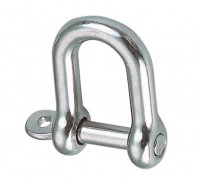
The 49er
History of the
The 49er was designed in 1995 by the Australian Julian Bethwaite as a One Design Skiff for the Olympic Games. In November 1996 he was elected to the Olympic Class by the International Sailing Federation ISAF. The name 49er is derived from the hull length - 4.99m - as in Asia the boat moorings cost significantly more from 5m. The buckling-span hull is narrow and flat as usual for a skiff, has a wide tail and wings that can be removed for transport. The width with wings is 2.9 m. The total length with the gennaker boom extended is 6.65 m. The fuselage is made of GFK and must weigh 94 kg with wings. Due to the solid workmanship, the hull is stable and very durable. Since the 49er is a unit class and the equipment is exactly limited, the Skiff remains relatively stable in value and the effort for beginners is manageable. A 49er has a self-tacking jib, a gennaker and a battened mainsail. The jib and mainsail are made of transparent polyester foil (brand name Mylar among others). The current sail manufacturer is Neil Pryde. The mast of the new rig has been made entirely of carbon fibre reinforced plastic since 2009. The boom is pushed from top to bottom by a lever system. The rig tension is always adjusted via a pulley system before sailing ashore. The post-trimming takes place on the water via the Turnbuckles (shroud tensioners). The mainsail is sailed directly from the main boom by the foresail, the jib by the helmsman.
Technical data of the 49er
Length: 6,65m, Width: 2,9m, Mast height: 8,5m, Sail area at the wind: 21,2 m², Mainsail: 15,0 m², Jib: 6,2 m², Gennaker: 38,0 m², Yardstick number: 81
Technical data of the 49er FX for ladies
Mast height: 7,5 m, sail area at wind: 19,6 m², mainsail: 13,8 m², jib: 5,8 m², gennaker: 25,1 m²
Guide to capsizing and safety
The 49er is an extremely demanding sport boat with which even experienced full professionals regularly capsize. At the Olympic Games in Beijing, for example, none of the ships made it across the finish line in the medal race without capsizing. Therefore, if you capsize, always check first if you are stuck somewhere and arrange a command in the crew for such a case. Always free immediately! A trap lurks in all the pods and in the trapezes. The clothing should therefore have no corners or edges. The shrouds can also be dangerous in leeward direction, as they are usually relaxed when sailing, but when they capsize they are fully tensioned at the moment when the mast hits the water surface. Major injuries can occur if you fall off the capsizing boat or are thrown. Jumping in a jib or mainsail is expensive but better than an injury after landing on a boom, mast, forestay, mast or hull. If possible, always keep your feet ahead to avoid head injuries. In case of slow capsizing, unhook in time to check the descent. Renew Grip Tape or Standlack in good time. This can avoid many falls and stumbles, especially at the beginning. In situations where a crew member is stuck under the boat, the following procedure must be followed:
Motorboat approaches from aft and lee of capsized ship and throws a straight line to other crew member already waiting for it. This line (is the front line of the motorboat plus extension = altogether approx. 10m) has at the end a karabiner (this is latched at the steering position of the motorboat) which is put after the throwing over by the crew member in front at the sword past and then in windward of the capsized boat in the main wall or in main and upper wall is hooked in. The motorboat then reverses downwind and with the help of the other crew member (on the saber) raises the boat halfway. Now the carbine is unhooked. The person who is stuck should normally now have air again and be able to free himself in peace. The coach now drives from windward to the 49er (after he has caught the front line) and checks if everything is ok and helps to free in case of doubt. If the hanger is hanging further down, the free crew member must stand up (possibly with the help of the coach) and the coach must then immediately stabilise the upright boat or capsize it in the direction in which it was just standing up. By now at the latest, the crew member should be above the waterline and should be able to be freed. Basically there should be a knife on the man and a small bolt cutter on board. If you should sail alone, make sure you have a mobile phone with you or an observer on land or at least a person to whom you log in and log out.






































